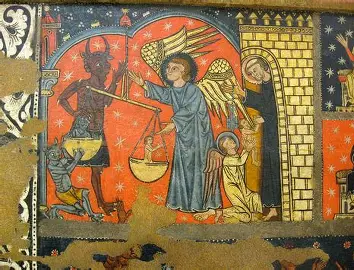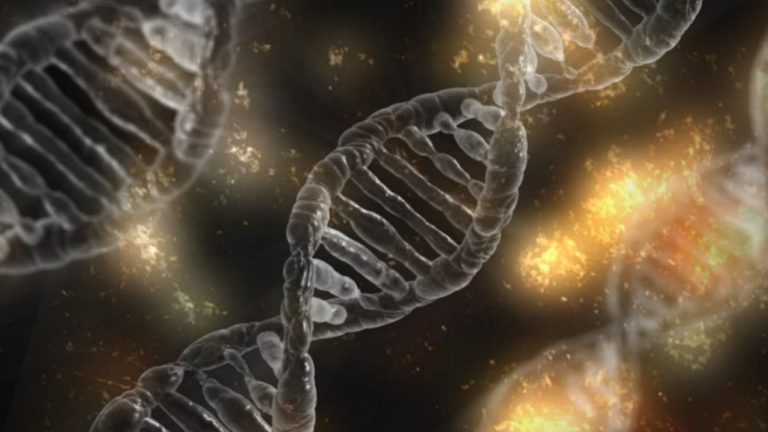Those believers in Conventional Reality don’t like new theories, facts, or discoveries that shake their comfortable worlds.
The Kolbe Center is a well known group whose members don’t share the conventional wisdom that the world is very old. This is from a press release describing how “scientists” react to something new and scary. It has to be read for any of us to understand how much fear there is of any fact that disrupts the comfortable, conventional reality that most believe.
Truly, to those in love with the status quo, this is something new and scary:
“Researchers have found a reason for the puzzling survival of soft tissue and collagen in dinosaur bones – the bones are younger than anyone ever guessed. Carbon-14 (C-14) dating of multiple samples of bone from 8 dinosaurs from Texas, Alaska, Colorado, and Montana revealed that they are only 22,000 to 39,000 years old. Since dinosaurs are thought to be over 65 million years old, the news is stunning. And more than some can tolerate. After the AOGS-AGU conference in Singapore, the abstract was removed from the conference website by two chairmen because they could not accept the findings. Unwilling to challenge the data openly, they erased the report from public view without a word to the authors or even to the AOGS officers, until after an investigation. It won’t be restored.”
So, the “scientists” ran into something new and scary. Did they seek truth, or simply bury the findings?
“The researchers presented their findings at the 2012 Western Pacific Geophysics Meeting in Singapore, August 13-17, a conference of the American Geophysical Union (AGU) and the Asia Oceania Geosciences Society (AOGS).
“Carbon-14 is considered to be unassailable in its reliability among dating methods. Its accuracy as a technique has been verified by using C-14 to date artifacts whose age is known historically. The possibility that the amount of C-14 in the air has fluctuated adds a small uncertainty. But the greater possibility for error is that the amount of C-14 in bone samples has been altered by contaminants such as decayed organic matter from soils.
“Dr. Thomas Seiler, a physicist from Germany, gave the presentation in Singapore. He says that his team and the laboratories they employed took special care to avoid contamination. That included protecting the samples, avoiding cracked areas in the bones, and meticulous pre-cleaning of the samples with chemicals to remove possible contaminants. Knowing that small concentrations of collagen can attract contamination, they compared precision Accelerator Mass Spectrometry (AMS) tests of collagen and bioapatite (hard carbonate bone mineral) with conventional counting methods of large bone fragments from the same dinosaurs. “Comparing such entirely different molecules as minerals and organics from the same bone region, we obtained concordant C-14 signals which were well below the upper limits of C-14 dating. These, together with many other remarkable signal concordances between samples from different fossils, geographic regions and stratigraphic positions make random contamination as origin of the C-14 signals unlikely”, he notes. “If dinosaur bones are 65 million years old, there should not be one atom of C-14 left in them.”
“Many dinosaur bones are not fossilized. Dr. Mary Schweitzer, associate professor of marine, earth, and atmospheric sciences at North Carolina State University, surprised scientists in 2005 when she reported finding soft tissue in dinosaur bones. She started a firestorm of controversy in 2007 and 2008 when she reported that she had sequenced proteins in the dinosaur bone. Critics charged that the findings were mistaken or that what she called soft tissue was really biofilm produced by bacteria that had entered from outside the bone. Schweitzer answered the challenge by testing with antibodies. Her report in 2009 confirmed the presence of collagen and other proteins that bacteria do not make. Also in 2009, the team of Dr. Phil Wilby discovered a fossilized squid that contained a sac of ink so well-preserved that it could be used in a pen for writing, found in rock that is considered to be 150 million years old. In 2011, a Swedish team found soft tissue and biomolecules in the bones of another creature from the time of the dinosaurs, a Mosasaur, which was a giant lizard that swam in shallow ocean waters. Schweitzer herself wonders why these materials are preserved when all the models say they should be degraded. That is, if they are over 65 million years old as the conventional wisdom says.”
So, something new and scary has come up. And, scientists race to distance themselves from it. Still, there we are. Dinosaurs and fossilized animals that simply aren’t as old as conventional reality wants them to be.
It’s ignored. Why? Because it’s a threat to funding. It’s something new and scary. Thanks, to the Kolbe Center. It’s well worth investigating, for those who aren’t afraid of something new and scary.








